Ready to invite more calm and clarity into your life? This beginner’s guide shares easy techniques, tips to overcome common challenges, and how to build a lasting habit. A peaceful mind is just a few minutes away each day.
Meditation is a powerful tool for enhancing mental clarity, reducing stress, and promoting inner peace. As a beginner, the idea of sitting still and quieting your mind may seem intimidating, but starting a regular meditation practices is simpler than you might think. In this guide, we’ll walk you through the essentials for meditation for beginners, from understanding what it is to practical tips for making it a consistent habit.
Whether you’re looking to improve your mental health, reduce stress, or deepen your spiritual awareness, this guide will help you embark on your journey of how to do meditation at home using effective meditation practices.
What is Meditation?
Meditation involves focusing your mind to achieve a heightened state of awareness and inner calm. There are many forms of these practices, but all share the goal of quieting the mind, controlling thoughts, and tuning into the present moment. It’s often seen as both a mental and spiritual practice, but its benefits go beyond just inner peace and can be applied effectively through practical techniques.
Types of Meditation:
Mindfulness Meditation: This form focuses on staying present and observing your thoughts and feelings without judgment. It’s one of the most popular meditation practices, rooted in Buddhist teachings, and ideal for meditation for beginners. Learning how to do meditation at home with this method can help you stay consistent and grounded.
Mantra Practice: In this method, you repeat a word or phrase (a mantra) to help maintain focus. This can be a powerful way to align your mind with positive energy and learn how to do meditation effectively.
Guided Sessions for Beginners: In guided sessions, an instructor leads you through the meditation, often visualizing peaceful settings or goals. These are especially useful for those just starting out.
Transcendental Meditation: This is one of the meditation practices where you silently repeat a mantra to settle into a state of restful alertness. It’s also a great approach if you’re exploring how to do meditation at home without the need for constant guidance.
Loving-kindness Meditation: This form cultivates compassion and love for yourself and others by focusing on sending positive energy outward.
While there are many other practices, these are some of the most common and easiest for meditation for beginners to start with, especially when learning how to do meditation at home.
Why Should You Meditate?
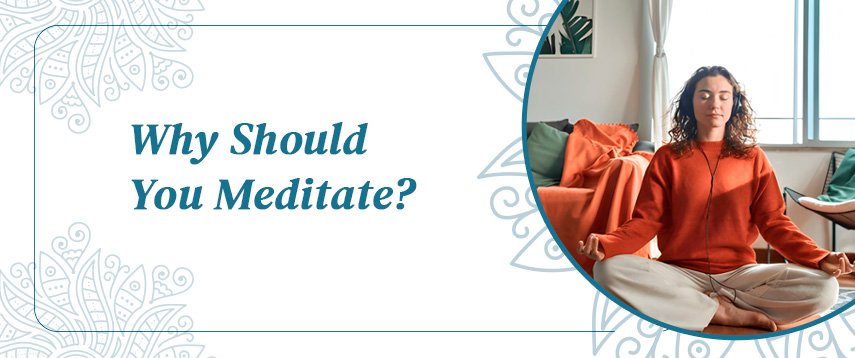
Meditation has both mental and physical health benefits that can transform your life. Below are some of the most notable advantages:
- Stress Reduction: One of the most well-documented benefits of meditation practices is their ability to reduce stress. They help lower cortisol levels, the hormone associated with stress, and can be easily applied when learning how to do meditation at home.
- Improved Concentration: Regular meditation for beginners improves attention span and helps you focus more effectively. It trains your mind to remain in the present moment.
- Better Emotional Health: This meditation practice can lead to a more positive outlook on life by fostering self-awareness. It helps manage symptoms of depression and anxiety, making it a valuable part of learning how to do meditation at home.
- Enhanced Self-Awareness: This practice encourages mindfulness and self-reflection, helping you become more aware of your thoughts, behaviours, and emotions.
- Better Sleep: Meditation before bed helps you relax and improve the quality of your sleep. Mindfulness meditation, in particular, clears your mind of distractions and stressors, making it easier to understand how to do meditation at home effectively.
- Pain Management: Some studies show that this practice can reduce pain perception, making it a useful tool for managing chronic pain.
- Spiritual Growth: For many, meditation practices serve as a pathway to spiritual enlightenment, and it also offers guidance on how to do meditation at home.
Preparing for Your Meditation Practice
Starting a meditation practices involves more than just sitting down to meditate. Preparation plays a key role in creating an environment that fosters mindfulness. Here’s how to practice meditation effectively:
- Choose a Meditation Space: You don’t need a dedicated room, but it helps to have a quiet, comfortable space where you won’t be interrupted. Choose a spot with minimal distractions. Adding calming elements like candles, cushions, or plants can create a peaceful atmosphere that supports meditation beginners and how to do meditation at home.
- Set Your Intention: Before you meditate, ask yourself why you’re doing it. Are you meditating to reduce stress, improve concentration, or connect spiritually? Setting an intention helps you stay committed and focused on your meditation practices.
- Decide on a Time: Consistency is key when starting a meditation for beginners routine. Choose a time of day that works best for you. Mornings set a peaceful tone; evenings help you unwind.
- Start Small: If you’re new, start with short sessions. Meditate for 5–10 minutes daily and increase over time. This gradual buildup is ideal for beginners.
Basic Meditation Techniques for Beginners
Once you’ve prepared your space and set your intention, it’s time to start meditating. Here are basic meditation practices for those wondering how to do meditation at home:
Once you’ve prepared your space and set your intention, it’s time to start. Here are basic practices for those wondering how to do meditation at home. These techniques also serve as great starting points if you’re exploring beginners’ routines or looking for effective ways to get started.
1. Mindfulness Meditation
This is one of the most accessible forms of meditation for beginners. Mindfulness practice involves sitting quietly and paying attention to your breath, thoughts, and sensations without judgment.
How to Practice:
- Sit comfortably in a chair or on a cushion.
- Close your eyes and take a few deep breaths to settle in.
- Focus on your breath as you inhale and exhale.
- When your mind wanders (and it will), gently bring your focus back to your breath.
- Continue for 5–10 minutes.
This is a foundational meditation practices that helps you build awareness and calmness. Practicing regularly helps strengthen mental clarity and reduces overthinking.
2. Body Scan Meditation
Body scan meditation practices involves mentally scanning your body for areas of tension or discomfort and releasing that tension as you go.
How to Practice:
- Lie down or sit in a comfortable position.
- Close your eyes and take a few deep breaths.
- Starting from your head, mentally scan down your body, paying attention to any areas of tightness or discomfort.
- As you exhale, release the tension from each body part.
- Continue until you’ve scanned your entire body.
This technique helps develop body awareness and is especially useful before sleep. It’s an ideal meditation for beginners to relax physically and mentally, making it a great example of how to do meditation at home.
3. Mantra Meditation
Mantra practice involves silently repeating a word, sound, or phrase to maintain focus.
How to Practice:
- Choose a mantra (like “Om” or “Peace”) that resonates with you.
- Sit comfortably and close your eyes.
- Begin repeating the mantra in your mind, allowing it to anchor your attention.
- If your mind wanders, bring it back to the mantra.
This technique is a great way to enhance concentration. It works well for meditation for beginners exploring how to do meditation at home with minimal guidance.
4. Loving-Kindness Meditation
Loving-kindness practice involves sending love and positive energy to yourself and others. It’s a great practice for cultivating compassion.
How to Practice:
- Sit in a comfortable position with your eyes closed.
- Focus on feelings of love and kindness. Start by sending positive energy to yourself.
- Gradually expand these feelings to loved ones, acquaintances, and eventually the entire world.
- Repeat phrases like “May I be happy,” “May I be healthy,” or “May all beings be at peace.” This exercise is a simple and effective way to practice how to do meditation at home.
This heart-centered meditation practices improves emotional well-being. It’s also a powerful way for beginners to experience connection and empathy.
Overcoming Common Challenges

As with any new habit, meditation for beginners comes with its own set of challenges. Understanding and addressing these obstacles is essential as you learn how to do meditation at home.
1. Restlessness and Distraction
It’s normal for your mind to wander, especially if you’re new to the practice. Don’t be discouraged. Every time you bring your focus back to your breath or mantra, you’re strengthening your ability to concentrate.
Tip: Be patient with yourself. Gently bring your attention back each time it drifts. This helps you build focus and stay present during your meditation practice, and is a helpful step in learning how to do meditation at home.
2. Difficulty Sitting Still
Many beginners find it difficult to sit still for long periods, especially if they are not used to sitting in silence. This practice is about learning to be present, even in moments of discomfort, which is an important part of understanding how to do meditation at home.
Tip: Begin with brief sessions and slowly build up your time. You can also change your sitting position if needed—comfort matters in meditation for beginners.
3. Inconsistent Practice
Building a consistent meditation practice can be challenging, particularly if you have a busy schedule. Skipping days or forgetting to meditate is common at the beginning, but with patience and persistence, it can gradually become a regular and rewarding habit.
Tip: Choose a specific time to meditate daily and tie it to a habit you already have. This helps you form a reliable routine while learning how to do meditation at home.
Making Meditation a Daily Habit
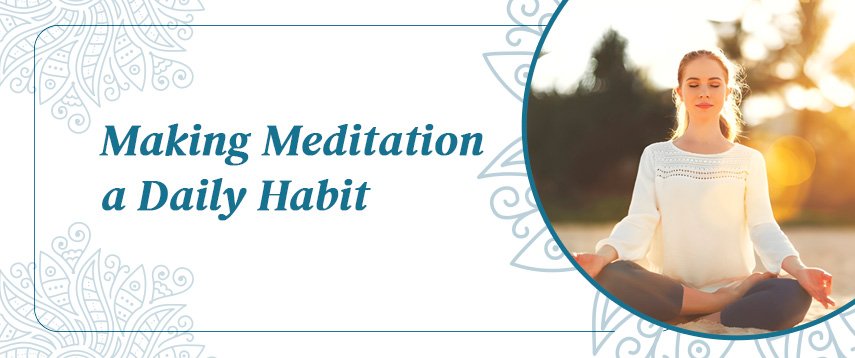
To experience the full benefits of your meditation practice, regularity is key. Here are some helpful tips to make meditation for beginners a lasting part of your daily life:
1. Start Small
You don’t need to meditate for long sessions right away. Start with 5–10 minutes daily and increase the duration gradually as you feel more confident. This is the best approach when figuring out how to do meditation as a beginner and learning how to do meditation at home.
2. Create a Ritual
Incorporate calming rituals into your routine. Light a candle, sip herbal tea, or play soft music before beginning. These rituals help your mind transition into a meditative state and create a sense of consistency for your meditation practices.
3. Track Your Progress
Use an app or keep a journal to log your sessions. Noting how you feel before and after each session can help you observe your growth and stay motivated. Tracking your journey is an effective way to stay committed to how to practice daily.
4. Be Patient
This practice is a gradual and personal journey. Don’t expect instant results. The benefits come with time, persistence, and practice.
Starting a meditation practice is one of the most rewarding investments for your mental, emotional, and spiritual well-being. It doesn’t require any special tools—just your presence and intention. Learning how to do meditation at home is simple, and it can deeply enhance your day-to-day life, making it perfect for Meditation for beginners.
By incorporating the tips and techniques outlined in this guide, you can embrace your journey with confidence. Remember, the key to lasting transformation is consistency, patience, and an open heart. So take a deep breath, find your quiet space, and begin today. Your mind—and your soul—will thank you.
My Sleep Game-Changer: Kyore Nutrition Melatonin Sleep Gummies
I’ve been through 6 months of tossing & turning … until I tried Kyore Nutrition Melatonin Sleep Gummies. Now I fall asleep in just 15–20 minutes. No more staring at the ceiling, no more restless nights.
What’s Inside & Why It Helps
- Restfull Sleep: Each gummy is packed with 7mg of Melatonin, a hormone that regulates your sleep-wake cycle, helping you fall asleep faster and stay asleep longer.
- Enhanced Sleep Quality: L-Theanine, a natural amino acid, promotes relaxation without causing drowsiness, ensuring a peaceful night’s rest without any grogginess upon waking.
- 3. Wake Up Fresh: With all natural ingredients, Kyore Nutritions Melatonin Gummies enhances your sleep quality and helps to control your sleep wake cycle.


4. Stress Relief: an adaptogenic herb, works wonders in reducing stress and anxiety, allowing your body and mind to relax before bedtime.
5. Best Price: 30 gummies at just Rs. 399/-

6. 4.5 Star Ratings by more than 550 people
🚀 Try It Yourself
If you’re in the same boat — tired, stressed, unable to sleep — this might be the helping hand you need.
Disclaimer:
This review is purely based on my personal experience with the product. I am not making any medical claims, and results may vary for different individuals. Please consult a qualified healthcare professional before starting any new supplement.
Frequently Asked Questions
-
What is meditation, and why should I try it?
Meditation practices are a form of focused awareness that helps reduce stress, improve focus, and promote emotional balance.
-
How do I begin my first meditation session?
Start by sitting comfortably, closing your eyes, and focusing on your breath for just 5–10 minutes—ideal for Meditation for beginners.
-
Do I need any special equipment to meditate?
No, just a quiet space and a comfortable seat or mat are needed for your meditation practice. Optional items include a cushion or a timer.
-
What’s the best time of day to try guided meditation for beginners?
Early mornings or before bedtime are ideal times to try guided sessions, helping you stay consistent and relaxed.
-
How long should I meditate as a beginner?
Start with 5–10 minutes daily and gradually increase as you get comfortable with the practice.
-
How to practice meditation when you can’t stop thinking?
That’s completely normal! Simply notice your thoughts and gently bring your focus back to your breath—this is how to engage in meditation practices without judgment.
-
Can I use music or guided meditations?
Yes, music and apps with guided sessions are great tools to help you stay focused, especially for meditation for beginners.
-
How soon will I start seeing benefits?
With regular practice, many people feel calmer and more focused within a few days to weeks.
-
Do I need to follow a specific tradition or style of meditation?
Not at all. Explore different styles—like mindfulness, mantra, or loving-kindness—and see what works best for you, especially for Meditation for beginners.
-
How to do meditation at home as a beginner?
Find a quiet space, sit or lie down comfortably, and start with deep breathing. This is an easy way to begin for beginners right at home.

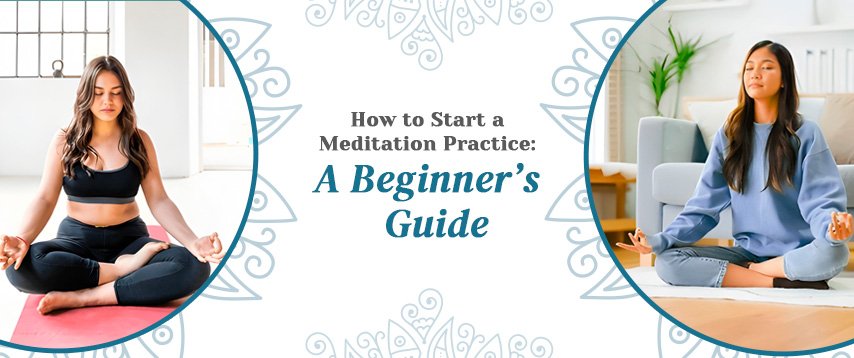
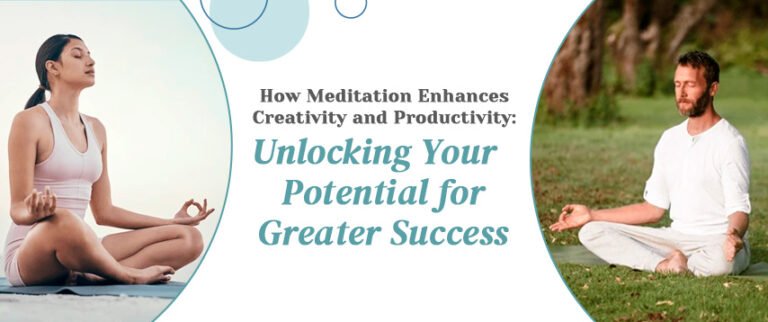
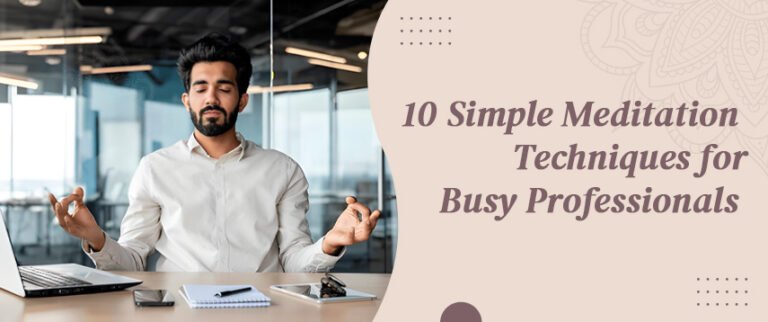

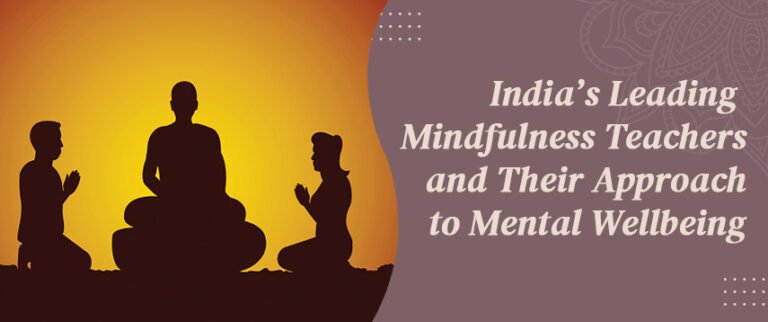

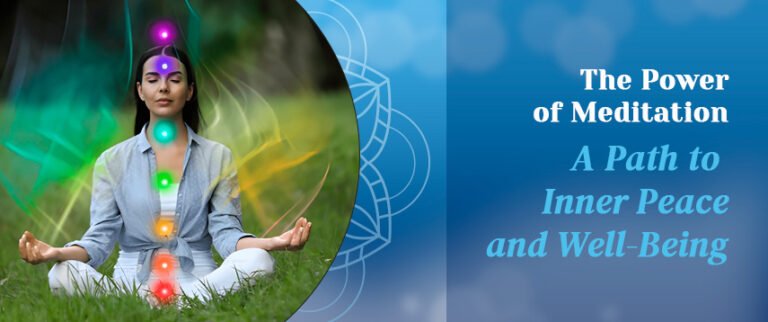
3 Comments
Pingback: Mindfulness For Beginners: A Step-by-Step Guide - BhaktiMeShakti
Pingback: माइंडफुलनेसमध्ये प्रावीण्य – नवशिक्यांचा मार्ग
Pingback: भारत के प्रमुख माइंडफुलनेस शिक्षक और मानसिक शांति का मार्ग